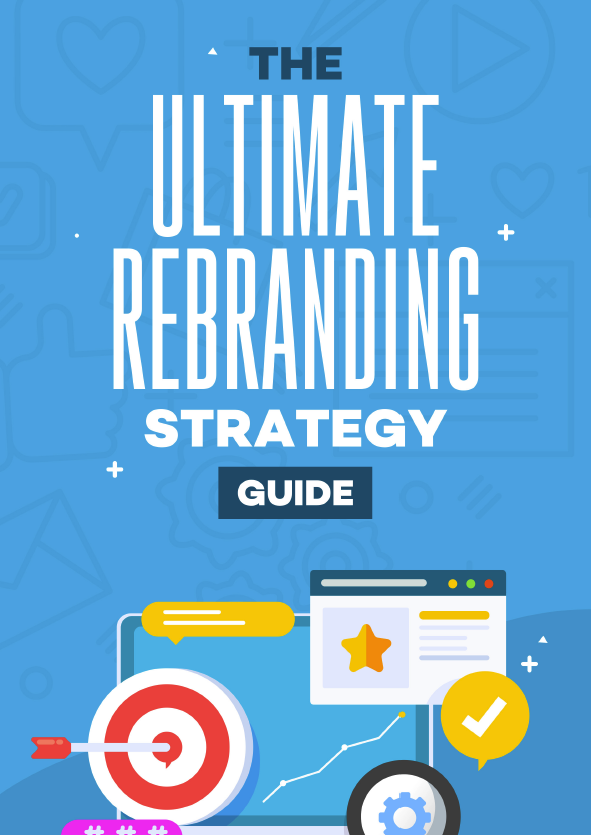You want to publish content online that will bring new customers to your website … but how exactly do you go about that?
Publishing content on your website is easy.
You write a blog post, publish it, and you’re done.
But when it comes to getting content published elsewhere on the web, you might not be sure where to begin.
It’s easy to fall into the trap of only publishing content on your own website.
Post after post after post … always hoping that this one will be your big break.
But it never seems to work.
The good news?
Your content is probably just fine.
The problem is that your website isn’t (yet) getting a lot of traffic.
And there’s an easy solution: publish some of your content on other platforms. (Bonus: with many of these, you can re-use the hard work you’ve already done for your own website.)
We’ll take you through everything you need to know, and run through some popular publishing platforms to try out.
What Makes Good Online Content?
Before we go further, we need to consider what good content looks like.
After all, there’s not much point hammering out dozens of pieces of content if they’re all mediocre — they won’t do anything to help you market your business.
Instead, you want to create content that stands out. Content that catches people’s attention. Content that wins you new leads — and new customers.
Ultimately, content that transforms — that takes your reader from where they are to where they want to go.
This transformational content is:
- Well structured. Your content needs to have a clear and logical structure. For instance, your blog post should be split into short sections, each with a subheading. That way, it’s easy for readers to skim for the information they need.
- Well researched. Any facts or figures in your content need to be accurate. You can’t simply make sweeping assertions without any evidence to back them up. Be careful to use reliable sources when researching your content.
- Well written. However great the structure and research, your piece will fall flat if the writing is subpar. You need to choose your words carefully, creating a piece of content that readers will be able to easily take in. Plus, your written voice should convey your brand.
- Inspiring. You have to convince the reader that your content can deliver on the promises it makes with proof from case studies or from science. Then, and only then, will they trust you to take them to the next step.
By focusing on the structure, research, and writing style of your content, you’ll be able to produce something that will draw people in again and again.
Strategies for Finding an Audience
If you don’t already have an audience of your own, or if your audience is still quite small, you might be wondering how to get your content in front of an audience at all.
However big or small your business is, you can:
- Borrow larger audiences from other businesses
- Find your ideal customers in social media groups
Borrowing a Larger Audience From Other Businesses
There are lots of established blogs, podcasts, and YouTube channels in your niche.
One fantastic way to quickly grow your own audience is to borrow their audience, briefly.
You might wonder why a blogger, podcaster, or YouTuber would let you do that.
After all, what’s in it for them?
The answer is a piece of great content … that you’re giving them for free.
That could be a written piece for their blog, often called a guest post.
It could also be an interview for their podcast or YouTube channel. Your content is your ticket to get in front of their audience.
You’ll get a “bio” at the bottom of your guest post where you can normally link back to whatever you like, such as the sales page for your online course. If you have a product or service that ties in neatly with the topic of your guest post, then this is a great chance to bring in some additional leads for your sales funnel.
If you’re interviewed, you’ll get your name and website mentioned — often at both the start and end of the podcast or YouTube video, as well as in the show notes.
Some of the people reading your guest post, or listening to you on a podcast or YouTube, will be interested enough to check out your website — and potentially become leads or customers for you.
Finding Your Ideal Customers in Social Media Groups
You can also bring in more of your ideal customers by posting great content in social media groups where they hang out.
This is a strategy you need to use carefully, as some groups won’t allow anything that approaches advertising.
In many cases, though, you can post helpful content, start a conversation, or reply to help someone with a problem or question. You can include a link to a useful post on your website, and this can bring in a bigger audience.
You may also find that your business’s Facebook page gets more likes and follows as a result.
In order to make sure we’re following the rules of the group in Facebook or elsewhere on social media, often, we will approach the moderators directly and ask for an interview or their permission to do a takeover. We’ve had varying levels of success with this method, but we will continue to try it for our brands. And you should try it too!

5 Popular Publishing Platforms
So where can you publish your content online, beyond your own website?
There are lots of places, but these are five of the best platforms to try out for different types of content:
Medium (articles)
Medium is a huge website full of articles on every topic imaginable. You can create original content for Medium — but you can also republish posts that have already been published on your blog, if you want to.
It’s quick and easy to publish on Medium, especially if you’re importing a post. Because Medium’s website has a high domain authority, your posts on Medium are likely to rank higher in Google than your posts on your own blog — especially when your blog is relatively new.
Because of this, publishing on Medium means you can bring in an audience much faster.
Once you’re established and generating good traffic on your own blog, double-posting becomes a cannibalizing exercise — Medium and your blog start competing for the same keywords, so tread carefully with this strategy, especially if your blog is already established.
LinkedIn (articles)
While LinkedIn is primarily a social network, you can use it to publish full-length articles.
Doing so is as simple as clicking the “Write Article” button when starting a post.
You’ll be taken to a screen where you can write an article, complete with images and/or video. Because your article will be published on the LinkedIn platform, it can very easily be shared and liked by your LinkedIn connections — spreading it through their audience too.
YouTube (videos)
If you want to produce video content, it makes a lot of sense to put it on YouTube, the world’s biggest video platform.
YouTube videos often rank highly in Google search results for “how to” style topics. (Remember, Google owns YouTube.)
Plus, plenty of people will go to YouTube — not Google or another search engine — when searching for tips, instructions, or ideas.
You can embed your YouTube videos into posts or pages on your own website, so publishing content on YouTube doesn’t mean missing out on publishing it on your site.
YouTube is really easy to get started with: you can use your existing Google account and set up your channel in just minutes.
We’ve had big success with this option, and it’s given Jerry Jenkins a second outlet that brings almost as many eyeballs as his blog does. Don’t discount the YouTube!
Tumblr (short posts)
Tumblr is a bit like a cross between social media and a blog, and it’s sometimes described as a “microblogging” website.
On Tumblr, it’s easy to create your own Tumblr blog. You can then post text and images; it’s important to hashtag these so they can be easily found by different Tumblr communities.
Tumblr is particularly well-used by Millennials and Generation Z, especially for fan-related topics, like artwork based on people’s favorite TV shows or movies.
If your target audience gathers on Tumblr, it could be a great platform to use. It’s quick and easy to get started with and you can publish text, photos, quotes, links, and more with just a click or two.
Quora (answering questions)
Quora is a question and answers website that gets a lot of traffic. Plenty of small business owners use Quora as a marketing tool, publishing unique content that answers common questions in their niche.
Writing a comprehensive answer means your answer is more likely to be featured prominently — leading not only the question-writer, but everyone else reading, to your website.
You can link back to your own website from your Quora answers (as well as from your bio) — try to pick a highly relevant post or other piece of content to link to. Make sure your answer is complete in itself, though; it shouldn’t just be a teaser for your post.
Other Platforms to Share Content On
As well as the publishing platforms we’ve looked at above, you’ll want to create content for social media – and share your longer pieces by linking to them from your social media pages.
Some of the best platforms to share your content on include:
Facebook – You could create content or share your existing content on your company page, from your personal profile, or in groups that you belong to on Facebook. (Be sure to check the group rules first to make sure linking to your website is allowed.)
Twitter – Perfect for short pieces of text content and for images, Twitter can quickly amplify your message if it gets retweeted by others. You could repurpose content from a longer piece, like a blog post, by tweeting quick takeaways from it.
Pinterest – If you love to curate content, Pinterest is the place for you. It’s a great social network for recipe and craft blogs — by “pinning” your posts to a Pinterest board, you’ll hopefully get more traffic.
Instagram – You’ll likely want to take photos or create other visual content just for Instagram, but don’t forget to link back to your blog posts, products, or services where relevant.
TikTok – Hugely popular with Gen Z, TikTok has become famous for its funny dances, viral videos, and entertaining trends. You’ll want to create or repurpose content for TikTok — remember, all your content needs to be in short video form here.

Start Publishing Your Content Online
Ready to get started? Pick one of the publishing platforms above and try it out. You might find your content gets a lot more attention than it does when you publish it on your own blog or website.
If you want to get the best possible results from publishing your content online, check out our personal branding coaching package.
You’ll figure out your ideal customer, craft your mission statement, and receive a personal brand action plan from us. We’ll share all our best advice with you and answer all the questions you have. That way, you’ll have everything you need for your content to get noticed — and get results.

